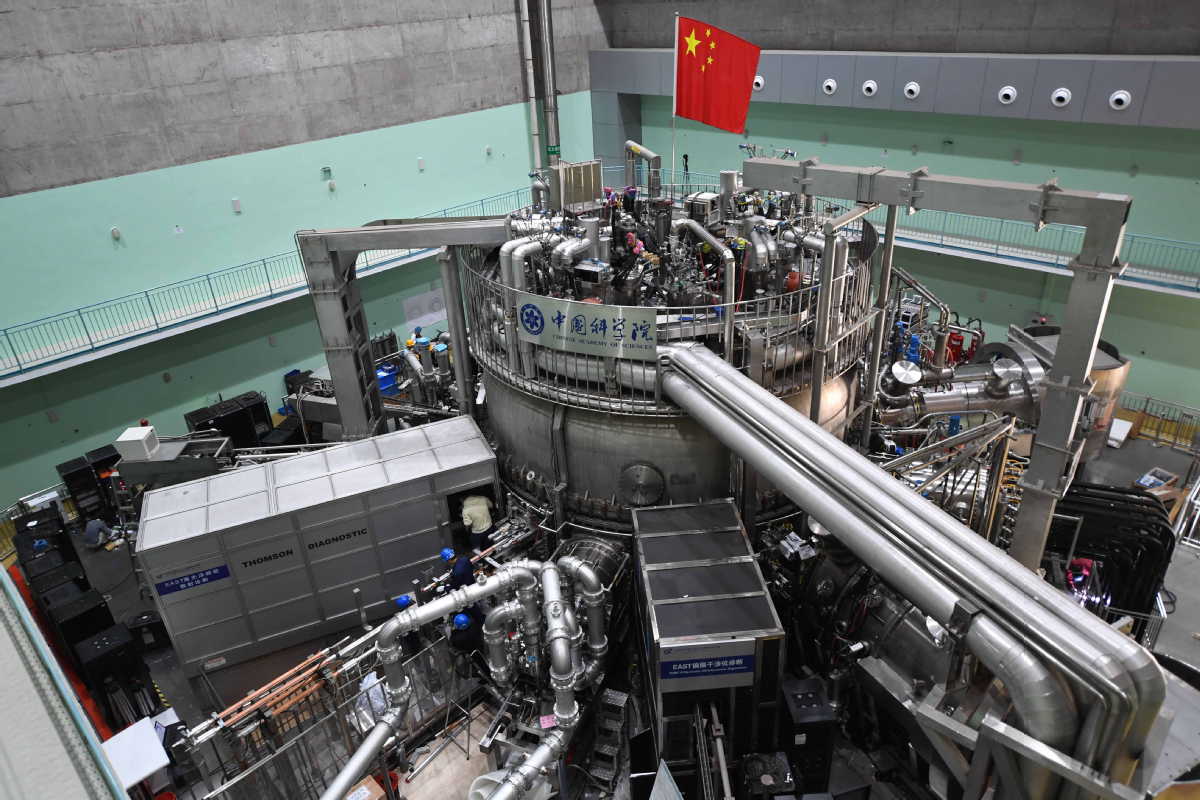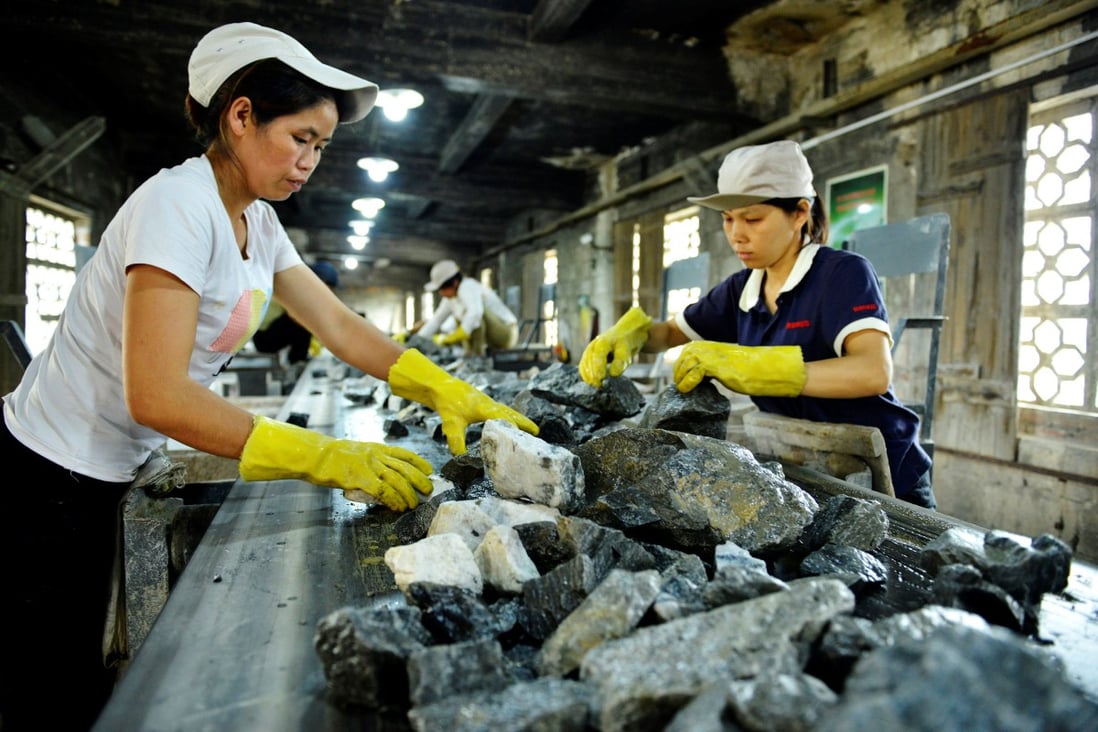Chinese scientists claimed to have established a world record by superheating a plasma loop to temperatures five times higher than the sun, not too long ago. They now claim to have made a technological breakthrough with potential use in nuclear fusion reactors.
Military Experts Mock Chinese ‘Low-Quality’ Hardware For Russia’s Sluggish Progress To Sweep Ukraine, Seize Kiev
A pure and more powerful version of tungsten has been developed, which can be employed in kinetic energy weapons and nuclear fusion reactors, SCMP reported.
The Chinese Academy of Sciences in Hefei, Anhui province, claimed to have produced the strongest tungsten bulk material, saying that the manufacturing process will allow it to be employed in the most demanding applications.
Tungsten, one of the heaviest and hardest natural elements with the highest melting point of all metals (3,410 degrees Celsius), can increase the performance of equipment used in harsh settings. It is, however, fragile. When a component constructed solely of tungsten powder is stretched or stressed, it splits or breaks apart readily.

To increase the ductility of a product in most real-world applications, material scientists must add softer elements like nickel, copper, or iron, the report claimed.
A research team led by Professor Wu Xuebang of the Institute of Solid State Physics in Hefei claimed in a paper published last month in Acta Materialia, an international peer-reviewed journal, that they had produced a large piece of pure tungsten with tensile strength reaching 1.35 gigapascals at room temperature – stronger than most tungsten alloys used today.
“The higher the tungsten purity, the lower the risk for fusion energy production,” Professor Fang Qianfeng, a scientist involved in the study, was quoted by SCMP.
The study was partially supported by China’s fusion reactor program, according to the researchers. As it seeks to create and market a game-changing source of clean energy, China plans to finish and start generating power from an experimental nuclear fusion reactor by about 2040, according to a top scientist involved in the project.
A massive doughnut-shaped device known as a tokamak, which uses extremely high temperatures to boil hydrogen isotopes into plasma, fusing them together and producing energy, cost China roughly 6 billion yuan ($893 million) as of 2019. If that energy can be harnessed, it will only take a little amount of fuel and produce almost no radioactive waste.
China has been making efforts to shift to cleaner forms of energy so as to honor its commitment to cutting carbon emissions that were made at the COP26 in Glasgow. An enhanced nuclear fusion reactor integrated with resilient and more powerful tungsten could be expected to aid that effort.
Wide-Ranging Applications
The Tungsten produced by Chinese scientists could apparently have applications in an array of systems, ranging from American “rods of God” to Chinese artificial reactors.
The American “rods from God” concept involves getting bundles of telephone pole-sized tungsten rods (20 feet long, one foot in diameter) dropped from orbit at up to ten times the speed of sound. The rod would pierce hundreds of feet into the ground, demolishing any reinforced bunkers or hidden underground bases.
When the rod collides, the explosion will be comparable to that of a ground-penetrating nuclear bomb. With such a weapon, destroying a target would take 15 minutes.
On the other hand, China’s popular ‘Artificial Sun’, the HL-2M fusion reactor at the Southwestern Institute of Physics (SWIP) in Chengdu generates electricity by compressing hydrogen with high magnetic fields until it forms a plasma that can reach temperatures of more than 150 million degrees Celsius.

It is ten times hotter than the Sun’s nucleus, and when the atoms fuse together, it generates massive amounts of energy. Magnets and super-cooling technology are used to keep the plasma contained.
Further, the tokamak is one of several magnetic confinement devices under development for producing controlled thermonuclear fusion power.
In May last year, China set a new record by maintaining the Experimental Advanced Superconducting Tokamak (EAST) at 120 million degrees Celsius for 101 seconds and 160 million degrees Celsius for 20 seconds, a crucial step toward the fusion reactor’s test run, Global Times had reported.
China’s Thermonuclear Goal
Through fusion, a thermonuclear reaction similar to the one which occurs in the sun, China’s artificial sun may possibly provide a nearly limitless supply of clean energy. If the Chinese government supports the project, a nuclear fusion reactor might be built by the early 2030s.
The fusion reactor would need to heat hydrogen gas to 150 million degrees Celsius, which is 10 times hotter than the sun’s core, in order to produce energy.
Although the gas would be encased in a powerful magnetic field, the reactor’s inner wall would still be exposed to high temperatures, stress, and radiation, creating an exceedingly hostile environment that most existing material cannot withstand.

A tungsten-brick wall can withstand these tests and keep a fusion power plant operational for years, if not decades. For years, scientists have struggled to figure out how to get rid of the other elements.
Tungsten cannot be cast because most industrial furnaces operate at temperatures below 1,800 degrees Celsius, well below the melting point of the metal.
Workers instead load a mold with fine tungsten powder and heat it to about 2,200 degrees Celsius until the powder crystallizes.
Wu and his colleagues, on the other hand, lowered the temperature by nearly a fifth before forging the tungsten using a hot, forceful hammer.
This novel processing procedure resulted in a crystal structure that no one had ever seen before, with individual crystals that were just a fraction smaller than normal and crystals that stacked in layers.
According to the researchers, random but widely scattered fissures appeared in these crystal layers. These minuscule fault lines, however, permitted the crystals to move freely against one another at the atomic level, the researchers said.
These movements, according to Wu’s team, could help absorb impact energy, making the material strong but flexible. The researchers said that their technique may also be used in military applications.
Military Applications
According to calculations by US military specialists, each hit might produce as much energy as a tiny nuclear explosion. However, due to the brittleness of tungsten, most armor-piercing ordnance developed by the US weapons industry currently contains depleted uranium for easier processing and improved performance.

According to a study by military industry specialists published in the Chinese-language Journal of Ordnance Equipment Engineering in December last year, the usage of tungsten in weaponry is far more prevalent in China.
Researchers from the Yichun Xianfeng Military Machinery firm in Jiangxi province revealed that a sort of bullet composed of a mixture of strong and brittle tungsten elements was designed to kill a heavily armored AH-64A Apache attack helicopter with just one shot.
The world’s greatest tungsten reserves are found in China. According to US Geological Survey data, Chinese companies produced roughly 70,000 tons of tungsten in 2019, accounting for more than 80% of global production.
The Hefei team claimed that their novel bulk material technique can be scaled up for large-scale manufacturing.
Even though the fusion reactor and Chinese experiment with Tungsten could massively aid in clean energy efforts, it could also cause more friction with the West due to its military applications and fear of nuclear proliferation within China.
- Contact the author at sakshi.tiwari9555@gmail.com
- Follow EurAsian Times on Google News




